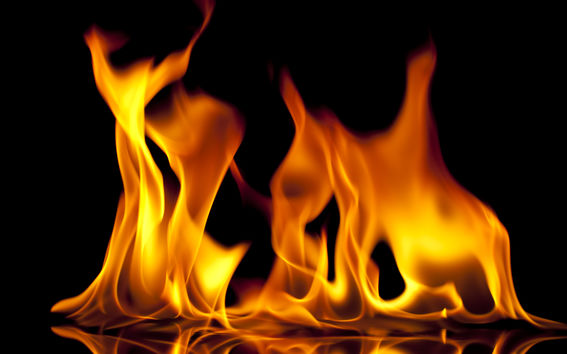Licentiate thesis presentation of MSc Hosein Sadeghi

When
Where
Event language(s)
Abstract
In combustion and fire, fuel vapors emerge in the gasification phase. Experimental studies have shown that the amount of these vapors close to the fuel surface is considerably high. It, therefore, alters radiative heat flux reaching the fuel and consequently, the fuel mass loss rate and the combustion mechanism. Due to the spectral nature of thermal radiation and the strong dependency of spectral radiative properties of fuel gases on temperature, there is a need for suitable models to account for the effect of fuel gases in radiative heat transfer. In this work, non-gray thermal radiation in fuel vapors is studied and novel weighted-sum-of-gray gases models (WSGG) are developed for Heptane, Methane, Methanol, MMA, Propane, Propylene, Toluene, Carbon Monoxide and soot. To develop the WSGG models, experimentally measured high-resolution spectral absorption data are used for Heptane, Methane, Methanol, MMA, Propane, Propylene and Toluene and line-by-line spectral data are employed for Methane and Carbon Monoxide. For soot, the complex index of refraction is calculated by the correlations of Chang and Charalampopoulos. The soot spectral absorption coefficient is then calculated assuming Rayleigh regime for soot particles. The obtained WSGG models are validated in five one-dimensional cases and in a three-dimensional case. The superposition method is employed to mix WSGG models of different species. In all the cases, the results obtained from the WSGG modeling are compared with line-by-line integration and they show a good accuracy. The method increased the number of required solutions of radiative transfer equation (RTE) up to 2500 in some cases but using premixed WSGG models for H2O-CO2 mixture, the number of the required RTE solutions decreased to 25 gases. Compared to the gray solution, the CPU time of the WSGG modeling with 25 gray gases was 12.9 times higher, however, the average error of heat source decreased from 18.3% for gray solution to 3.93% for WSGG modeling compared to LBL integration.
Supervisor: Simo Hostikka, Associate Professor, Fire Safety Engineering, Aalto University, School of Engineering, Department of Civil Engineering
Advisor: Dr. Techn. Hadi Bordbar, Aalto University, School of Engineering, Department of Civil Engineering
Contact information of MSc Hosein Sadeghi, Aalto University, School of Engineering, Department of Civil Engineering, [email protected]
Licentiate thesis of Hosein Sadeghi https://aaltodoc.aalto.fi/handle/123456789/114149